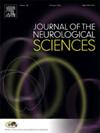Baseline predictors of cross-sectional and longitudinal performance on the symbol digit modalities test in individuals with multiple sclerosis
IF 3.6
3区 医学
Q1 CLINICAL NEUROLOGY
引用次数: 0
Abstract
Background
Cognitive impairment occurs frequently in persons with multiple sclerosis (PwMS) at some point in the course of the disease. However, not all PwMS develop cognitive difficulties suggesting a role for important moderating factors. We examined baseline predictors of cross-sectional and longitudinal change in cognitive performance in PwMS.
Methods
680 PwMS enrolled in the Comprehensive Longitudinal Investigation of Multiple Sclerosis at the Brigham and Women's Hospital who completed the Symbol Digit Modalities Test (SDMT), a brief measure of speed of information processing, at least twice during a 10-year period were identified. Potential baseline demographic (age, education, and sex), clinical (disability, disease duration, and disease category), and patient-reported outcome (PRO) (fatigue, depression, and quality of life) predictors were examined in cross-sectional analyses using linear regression and in longitudinal analyses using linear mixed effects models.
Results
In cross-sectional analyses, age, disease duration, and disability each showed associations with SDMT. Group differences were observed between females and males, subjects with and without college degrees, and subjects with relapsing and progressive MS. All PRO measures showed associations with SDMT, and the strongest association was with fatigue. In the longitudinal model, increased baseline age and increased baseline disability were each associated with a greater decline in SDMT performance. None of the baseline PROs were associated with longitudinal change in SDMT.
Conclusion
We observed strong associations between baseline demographic, clinical, and PRO measures and concurrent SDMT, but more limited associations between these measures and longitudinal change in SDMT.
多发性硬化症患者符号数字模式测试横断面和纵向表现的基线预测因素。
背景:认知障碍在多发性硬化症(PwMS)患者的病程中经常发生。然而,并不是所有的PwMS发展认知困难提示一个重要的调节因素的作用。我们检查了PwMS患者认知表现横断面和纵向变化的基线预测因子。方法:在布莱根妇女医院进行多发性硬化症综合纵向调查的680名PwMS中,他们完成了符号数字模式测试(SDMT),这是一种信息处理速度的简短测量,在10年期间至少两次。在使用线性回归的横断面分析和使用线性混合效应模型的纵向分析中,对潜在的基线人口统计学(年龄、教育程度和性别)、临床(残疾、疾病持续时间和疾病类别)和患者报告的预后(PRO)(疲劳、抑郁和生活质量)预测因素进行了检验。结果:在横断面分析中,年龄、病程和残疾均显示与SDMT相关。在女性和男性、大学学历和非大学学历、复发性ms和进行性ms之间存在组间差异。所有PRO测量均显示SDMT与SDMT相关,其中与疲劳的相关性最强。在纵向模型中,基线年龄的增加和基线残疾的增加都与SDMT表现的更大下降有关。所有基线pro均与SDMT的纵向变化无关。结论:我们观察到基线人口统计学、临床和PRO测量与并发SDMT之间有很强的相关性,但这些测量与SDMT的纵向变化之间的相关性更有限。
本文章由计算机程序翻译,如有差异,请以英文原文为准。
求助全文
约1分钟内获得全文
求助全文
来源期刊

Journal of the Neurological Sciences
医学-临床神经学
CiteScore
7.60
自引率
2.30%
发文量
313
审稿时长
22 days
期刊介绍:
The Journal of the Neurological Sciences provides a medium for the prompt publication of original articles in neurology and neuroscience from around the world. JNS places special emphasis on articles that: 1) provide guidance to clinicians around the world (Best Practices, Global Neurology); 2) report cutting-edge science related to neurology (Basic and Translational Sciences); 3) educate readers about relevant and practical clinical outcomes in neurology (Outcomes Research); and 4) summarize or editorialize the current state of the literature (Reviews, Commentaries, and Editorials).
JNS accepts most types of manuscripts for consideration including original research papers, short communications, reviews, book reviews, letters to the Editor, opinions and editorials. Topics considered will be from neurology-related fields that are of interest to practicing physicians around the world. Examples include neuromuscular diseases, demyelination, atrophies, dementia, neoplasms, infections, epilepsies, disturbances of consciousness, stroke and cerebral circulation, growth and development, plasticity and intermediary metabolism.
 求助内容:
求助内容: 应助结果提醒方式:
应助结果提醒方式:


